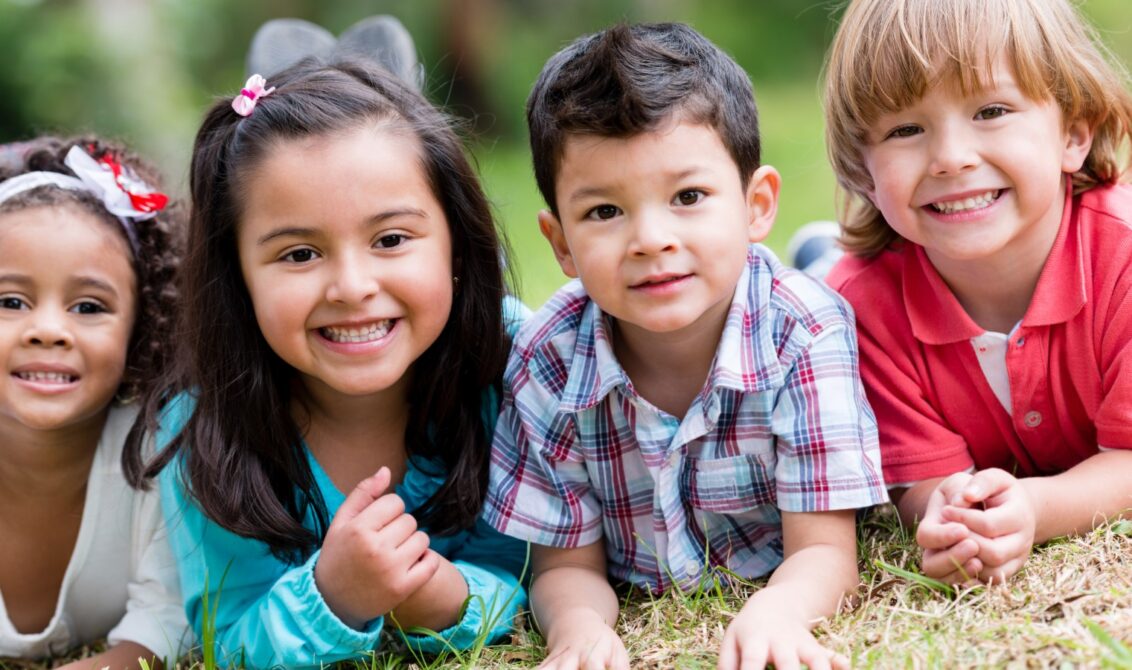
When a three to five-year-old child steps into a Reception or Early Years class, it is often the first time they have experienced a dedicated learning environment. It’s a key moment: what children learn at this age and developmental stage can have a lasting impact on their success later on in school.
So how can we make sure that they have a positive, enriching experience? The answer is surprisingly simple – give them lots of opportunities to play.
The benefits of play
“In play, the child is always behaving beyond his age, above his usual everyday behaviour; in play he is, as it were, a head above himself. Play contains in a concentrated form, as in the focus of a magnifying glass, all developmental tendencies; it is as if the child tries to jump above his usual level.”Leo Vgotsky
There is an extensive body of research which shows that play is an important part of child development. Children benefit from all types of play, physical, symbolic, object and imaginative play.
Play is profoundly important when it comes to children’s social, emotional and cognitive learning. It allows them to pretend, to take risks, to explore and follow their interests. They learn to negotiate and communicate with their peers. Play also provides opportunities for children to control their emotions and behaviour. At the same time, it teaches skills like creativity and problem solving.
How to bring play into your classroom
“Play is the work of childhood.”Jean Piaget
When it comes to early years education, one of the most well-known models is the Finnish model, where children don’t enter an academic learning environment until they are seven years old. Before that, the majority of children attend kindergarten, where the focus is on playing. Even once they begin school, there is a “play break” of fifteen minutes every hour. And this play-rich education culture extends throughout the Finnish school system, which is renowned globally as one of the best.
So, what types of play should you encourage? And how can you create lots of opportunities for play in your classroom? Here are some ideas:
1. Physical play
Physical, outdoor play is very important, but schools have seen a steady decrease in break time. A recent study in the UK found that break time, where students can play outside, has been reduced over the last two decades. So, take your students outside! Give them time to run, climb and explore. This type of free play develops students’ gross motor skills and helps them to focus more during other types of play.
2. Object play
The active, playful manipulation of objects helps to develop fine motor skills and encourages exploration and experimentation. When objects are used in social play, children learn about sharing and taking turns. In addition, research has shown that object play, for example building blocks, can support early mathematical understanding. So make sure your classroom is equipped with plenty of toys, materials and loose parts for the children to play with and manipulate as part of their games.
3. Symbolic play
Symbolic play is all about language and early literacy. Drawing, rhyming, singing are all examples of symbolic play, and are important for supporting early literacy. You can create lots of opportunities for symbolic play by teaching children nursery rhymes, reading repetitive stories and singing songs, as well as making sure there is plenty of material for drawing and mark-making.
4. Pretend play
This refers to imaginative and dramatic play, where an object becomes something different (a banana becomes a telephone, for example), or children act out a dramatic story in a group. Pretend play is very significant for social, emotional and cognitive development. It encourages creativity and problem solving, as well as helping children to self-regulate their emotions. Pretend play often happens during free play, so you can support this by creating unstructured time where children can play freely and follow their imaginations.
Our Reception/Early Years curriculum
Our curriculum for three- to five-year-olds is designed to help children get ready for full-time academic education, while at the same time creating lots of opportunities for play and discovery. We have worked closely with pedagogical experts to develop materials for this age group. The programme has three main strands:
1. Maths – the Maths curriculum inspires mathematical curiosity and resilience, while introducing key mathematical concepts like shape work and pattern recognition.
2. English – the English curriculum encourages early language development and exploration from developmental writing and mark-making to early reading.
3. The World Around Us – this curriculum explicitly supports investigation and problem-solving, as well as supporting emotional and physical development. It helps children to develop early research and questioning skills and encourages social development.
Further reading
Discover why a high-quality reception experience is so important.
Read more about our iPrimary Reception/Early Years curriculum and supporting Reception/Early Years resources.
Sign up to receive our blog updates
Like what you read and want to receive more articles like this direct to your inbox? Subscribe to our blog and we’ll send you a fortnightly digest of the blog posts you may have missed, plus links to free resources to support your teaching and learning.

